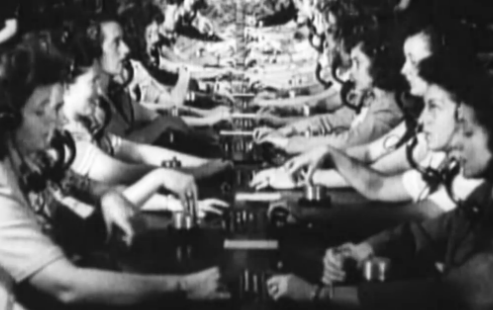From Steno Pools To Cubicles And Back Again: How Offices Put Up Walls, Only To Pull’em Down

Open workspace, anyone? (Bloomberg)
While it might be hard to believe now, especially if you’re currently staring at the fabric-covered walls of a corporate enclosure — cubicles were first intended as a form of salvation in the workplace. Having three walls to call your own seemed like paradise compared to steno pools filled with clacking typewriters and workers crowded together.
And now it seems the circle of office life is continuing, Bloomberg points out in an interesting video about the history of cubicles, featuring Nikil Saval, author of Cubed: A Secret History of the Workplace.
When the cubicle debuted in 1968, it was meant to provide a refuge from the crowded, open workspaces of its day. Yes, you’re thinking of Mad Men right now.
“The idea was to give workers something of their own, that they could personalize,” Saval explains.
But anyone who’s ever worked in one of those things or seen the movie Office Space is likely to cringe at the thought of those micro-offices, which ended up filling the floors of companies with as many workers as could possibly be squeezed in.
As soon as cubicles became synonymous with big, dumb companies, and “one of the most reviled objects in the workplace,” open work spaces were seen as the path to freedom.
But despite that roundabout trip and our collective loathing of cubicles, Saval cites research that says people who leave cubicles for open workspaces often miss those very same walls that once fenced them in.
Basically, we can’t make up our minds and will probably go back and forth between the two styles forever, because all of this has happened before, and will happen again.
Cubicles Were Once Awesome. So What Went Wrong? [Bloomberg]
Want more consumer news? Visit our parent organization, Consumer Reports, for the latest on scams, recalls, and other consumer issues.

